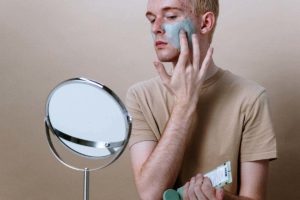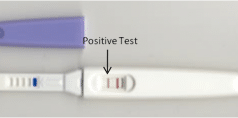
Microbes like bacteria, fungi and viruses live all over the body and its normal. Each microbe is slightly different in terms of whether it’s colonizing the body ( in other words just living and not causing any problems) or whether it’s infecting the body, which is causing some degree of tissue damage or destruction. An important point is- how much of a microbe is present. When the amount of Candida is relatively low it’s harmless. But if a person’s immune system is weakened or if there’s less competition for the candida, then the amount of candida can increase-and that’s called Candida overgrowth. Candida skin rash appears when the bacteria lives on the skin or mucous membranes and starts to overgrow. It can damage nearby tissue. The result is destruction of the stratified squamous epithelium layer which is the outermost layer of the skin or mucous membranes. The most common one is pseudomembranous candidiasis and it’s primarily due to a weakened immune system that allows Candida overgrowth.
The skin is a shield and defender of our body, stands on the first line defending the viruses from getting into our body. Candida skin rash causes redness and intense itching. The infection can cause the skin to become cracked and sore. Ares you will see the changes usually are:
- In the groin
- Between the fingers
- Under breasts
- In the nails and its edges
- Corners of the mouth
As soon as you see these signs you will need to book a visit to a doctor. Examination and testing is very simple. Doctor will collect a skin sample and send it to the laboratory for the bacteria analysis.
What Causes Candida On The Skin?
- Warm and moist environment
- Tight clothing
- Poor hygiene
- Infrequent undergarment changes
- The use of antibiotics that kill harmless bacterias
- The use of corticosteroids or other medications that affect the immune system
- Diabetes, pregnancy, or another medical condition
- Incomplete drying of damp or wet skin
Candidiasis of skin usually is not contagious but people with weakened immune systems may get under that condition after touching the infected skin.
Treatment
Antifungal drugs are used most frequently in the treatment of cutaneous candida infection, including nystatin, miconazole nitrate (Micatin, Monistat-Derm), or clotrimazole (Lotrimin, Mycelex) creams.
- Azole medications belong to the antifungal drugs family that end in the suffix “-azole.” They block the manufacture of ergosterol, a constructional material of the yeast cell wall. Without ergosterol, the yeast cell wall becomes leaky and the yeast dies. Ergosterol is not a component of human membranes, respectively azoles don’t harm human cells.
- Polyene antifungal medications Amphotericin, nystatin, and pimaricin. They interact with sterols in the cell membrane (ergosterol in fungi, cholesterol in humans) to form channels through which small molecules leak from the inside of the fungal cell to the outside.
- Candidiasis usually can be prevented by home remedies. The core thing is proper hygiene. Keep your skin clean and dry, wash your body regularly. Change out of damp clothing, such as swimsuits or sweaty workout clothes. The same refers to socks and underwear. Very important to use gentle and scent-free soaps. follow a healthy lifestyle, including proper nutrition and add probiotics to your diet. People with diabetes should try to keep their blood sugar under tight control.
Candidiasis of skin is an easily treated medical condition. Take steps in time and follow doctors advice. Never forget about your lifestyle. All the issues usually come from the imbalanced physical activity, food and unhealthy habits. Make your life more beautiful with beautiful actions towards you and your body. Stay hydrated!








